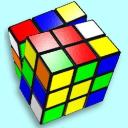Yahoo Answers is shutting down on May 4th, 2021 (Eastern Time) and beginning April 20th, 2021 (Eastern Time) the Yahoo Answers website will be in read-only mode. There will be no changes to other Yahoo properties or services, or your Yahoo account. You can find more information about the Yahoo Answers shutdown and how to download your data on this help page.
Trending News
Basic probability question...having a debate with a friend, please help!?
There are 933,120 distinct balls (labelled 1 through 933,120) in a bucket. If you grab a ball at random 10,000 times, with replacement, what is the probability of getting the ball labelled 933,120?
5 Answers
- husoskiLv 74 years ago
The probability of getting that ball at least once is 1 - (933119/933120)^10000.
That's about 0.01066, just a hair over a 1% chance.
The fraction 933119/933120 is the probability of *not* picking that ball on any single draw. The probability of never drawing it in 10,000 tries is the 10,000 power of that fraction. Finally, the probability of drawing the ball at least once is the complement of the probability of never drawing it.
- ?Lv 44 years ago
The probability of not drawing ball 933,120 on the first draw is 933119/933120.
The probability of not drawing ball 933,120 on the first draw and not drawing ball 933,120 on the second draw is (933119/933120)²
The probability of not drawing ball 933,120 on any of the 10,000 draws is (933119/933120)¹⁰⁰⁰⁰
Hence the probability of getting the ball 933,120 at least once is 1-(933119/933120)¹⁰⁰⁰⁰
This is approximately 1.066%.
If you incorrectly simply divide 10000/933120, you get 1.072%
The difference arises because it is possible that you could draw ball 933,120 more than once in the scenario given and this probability needs to be taken into account.
- PuzzlingLv 74 years ago
So what is your answer and reasoning? What is your friend's reasoning? I'm not sure there is a "friend" involved, but I'm still going to answer your question.
Rather than counting the probability of drawing that ball on at least one of the tries, compute the opposite probability -- that the ball isn't picked on all 10,000 draws.
The probability that it isn't drawn on a specific draw is 933119/933120. And then you would multiply that probability times itself 10,000 times to get the probability it isn't drawn on all 10,000 draws.
P(not drawn) = (933119/933120)^10000
But again, we want the *opposite* probability that it is drawn at least once, so subtract from 1:
P(drawn at least once) = 1 - (933119/933120)^10000
Answer:
~0.01065952131 (about 1.066%)
- ?Lv 74 years ago
With replacement:
P(getting ball #933,120)
= 1 − P(not getting ball #933,120)
= 1 − (933,119/933,120)^10,000
= 0.01065952131266392782548393857225
- How do you think about the answers? You can sign in to vote the answer.
- 4 years ago
The chance of not getting it after 1 time: 933119/933120
The chance of getting it after 1 time: 1 - 933119/933120
The chance of not getting it after 2 times: (933119/933120)^2
The chance of getting it after 2 times: 1 - (933119/933120)^2
In general, the chance of getting it after n times: 1 - (933119/933120)^n
1 - (933119/933120)^10000 =>
0.010659521312663927825483938572250958249256005741992850397
1.066%





